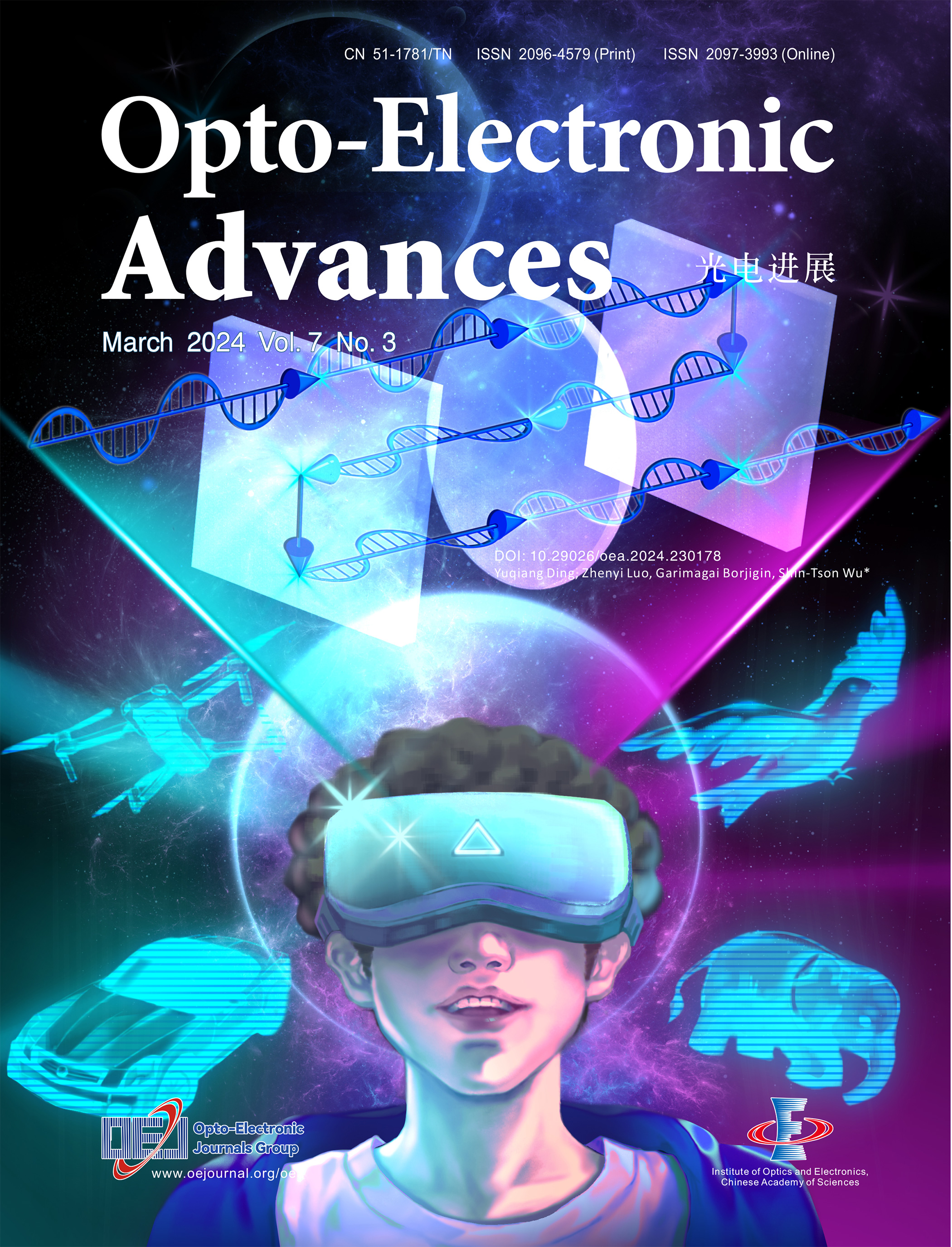2024 Vol. 7, No. 3
Cover story: Ding YQ, Luo ZY, Borjigin G et al. Breaking the optical efficiency limit of virtual reality with a nonreciprocal polarization rotator. Opto-Electron Adv 7, 230178 (2024).
A catadioptric lens structure, also known as pancake lens, has been widely used in virtual reality (VR) and mixed reality (MR) displays, such as Apple Vision Pro and Meta Quest 3, for reducing the formfactor. However, the utilization of a half mirror to fold the optical path three times reduces the theoretical maximum optical efficiency to 25%, which dramatically increases the power consumption and limits the continuous operation time to about two hours. Several approaches to enhance the optical efficiency have been proposed, but the compact formfactor is compromised. Recently, Prof. Shin-Tson Wu’s research team at CREOL, The College of Optics and Photonics, University of Central Florida, reported a novel pancake optics system with a nonreciprocal polarization rotator, also known as Faraday rotator, which can achieve theoretically 100% optical efficiency while keeping the same folding capability. Such a novel pancake optics system can revolutionize next-generation VR and MR headsets with lightweight, compact formfactor, and low power consumption. Besides, the pressing need for a broadband and magnetless thin-film nonreciprocal polarization rotator is expected to inspire the next-round magneto-optic material development in the future.

-
{{article.year}}, {{article.volume}}({{article.issue}}): {{article.fpage | processPage:article.lpage:6}}. doi: {{article.doi}}{{article.articleStateNameEn}}, Published online {{article.preferredDate | date:'dd MMMM yyyy'}}, doi: {{article.doi}}{{article.articleStateNameEn}}, Accepted Date {{article.acceptedDate | date:'dd MMMM yyyy'}}CSTR: {{article.cstr}}
-
{{article.year}}, {{article.volume}}({{article.issue}}): {{article.fpage | processPage:article.lpage:6}}. doi: {{article.doi}}{{article.articleStateNameEn}}, Published online {{article.preferredDate | date:'dd MMMM yyyy'}}, doi: {{article.doi}}{{article.articleStateNameEn}}, Accepted Date {{article.acceptedDate | date:'dd MMMM yyyy'}}CSTR: {{article.cstr}}

 E-mail Alert
E-mail Alert RSS
RSS


